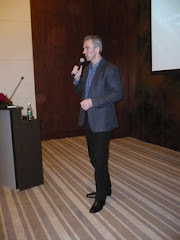No, that's not sloppy editing in the title. There have been some very smart people whom history forgot. Others have been forgotten... and then remembered. What does all this forgetting and remembering mean? If you are smart, you are smart, right? Not if nobody understands what on Earth you are talking about... or doing...
Over five centuries ago there lived a middle-aged man of somewhat ambiguous sexual inclinations, the illegitimate son of a public notary. He kept a teenage boyfriend camped up (pardon the pun) in his attic. The man was known as a gifted artist, and was adored by many, but he was also considered an eccentric and a crank amongst many of his peers and contemporaries, something of flake who never seemed to get his crazy projects finished. He tinkered around in his workshop with paintings, designs of weaponry, and amused himself by dissecting dead people and drawing pictures of their innards. There was no question that he had great talent, but many observers could not decide whether what this strange individual was doing was anything terribly relevant or useful.
All this created the odd scandal in the conservative towns where he lived (he moved around from time to time), and some locals thought he was up to doing the devil’s work, most likely because of his requests for a steady supply of dead people to cut up. Eventually, in late middle age, the man passed away. Although he continued to be considered with some awe amongst certain intellectuals, his name eventually faded from popular discussions. His crazy sketches, designs and work tools gathered dust in the home a friend, and were passed down from generation to generation, remaining forgotten for the best part of two centuries. That was, until somebody stumbled upon them one day, and came to the conclusion that they were not the works of a crazed madman at all, but the product of a brilliant and under-unappreciated mind. The discovery of these artifacts resurrected the man’s name, and his fame grew to such proportions that he became one of the best known men who ever lived.
Have you worked out who the eccentric was by now? I am referring, of course, to none other than Leonardo da Vinci, now widely acknowledged as one of the greatest geniuses of all time, and quite possibly the most broadly talented individual to ever walk the earth. Most of us have heard of him, and are aware of his timeless paintings such as the Mona Lisa , and have seen his sketchings of early helicopters, submarines and tanks. Yet not so many people know that Leonardo is something of a Lazarus. He was almost forgotten for an awfully long time (the best part of two centuries), and it was not until his works were dusted off and brought down from the family attic that the general public began to fully appreciate what an incredible mind Leonardo had.
Leonardo Da Vinci was a genius ahead of his time, quite literally. The problem was that many of his ideas simply made little sense to his contemporaries, because there was a lack of social, cultural and institutional frameworks and concepts whereby they could be comprehended. Secondly, societal norms of his day made some of his behavior scandalous and unacceptable.
Leonardo’s story reminds us that human beings are capable of being smart in ways that may not be recognised in the times and cultures in which they live. To put it another way, there are cognitive artifacts that are left off the map because people don’t even recognise them, let alone appreciate them. If you had lived in Leonardo’s time, and had walked past him on the street, would you have been able to tell him apart from anyone else? Almost certainly not. In order for talent, and indeed intelligence to be acknowledged, it must be permitted expression and acknowledgement within an institution, society, culture and knowledge structure that nourishes and supports it. Otherwise that intelligence is likely to remain a mere potential, and never actualised. Even if that intelligence is expressed and utlised personally, it will probably play no part as an observable behaviour in that person’s life. If Einstein had been born before the age of modern physics - say in an indigenous society - he could never have developed his theory of relativity, although he may well have expressed his considerable creative and imaginative capacities in other ways. It was Leonardo’s art that was most appreciated in his day, as it was obvious to most that he was an artistic genius. Simply seeing The Last Supper would have been enough to convince people of that. His other talents had to wait a while to be recognised fully.
The expression of intelligence is also dependent upon the past, as the prior knowledge that is developed enhances collective human intelligence. Intelligence is not merely a property of the individual. It rests upon broad shoulders. Isaac Newton’s oft-quoted remark was that he saw farther than others only because he stood on the shoulders of giants. Take Newton off those broad shoulders, and you have a man tinkering around with marbles on the bathroom floor.













No comments:
Post a Comment